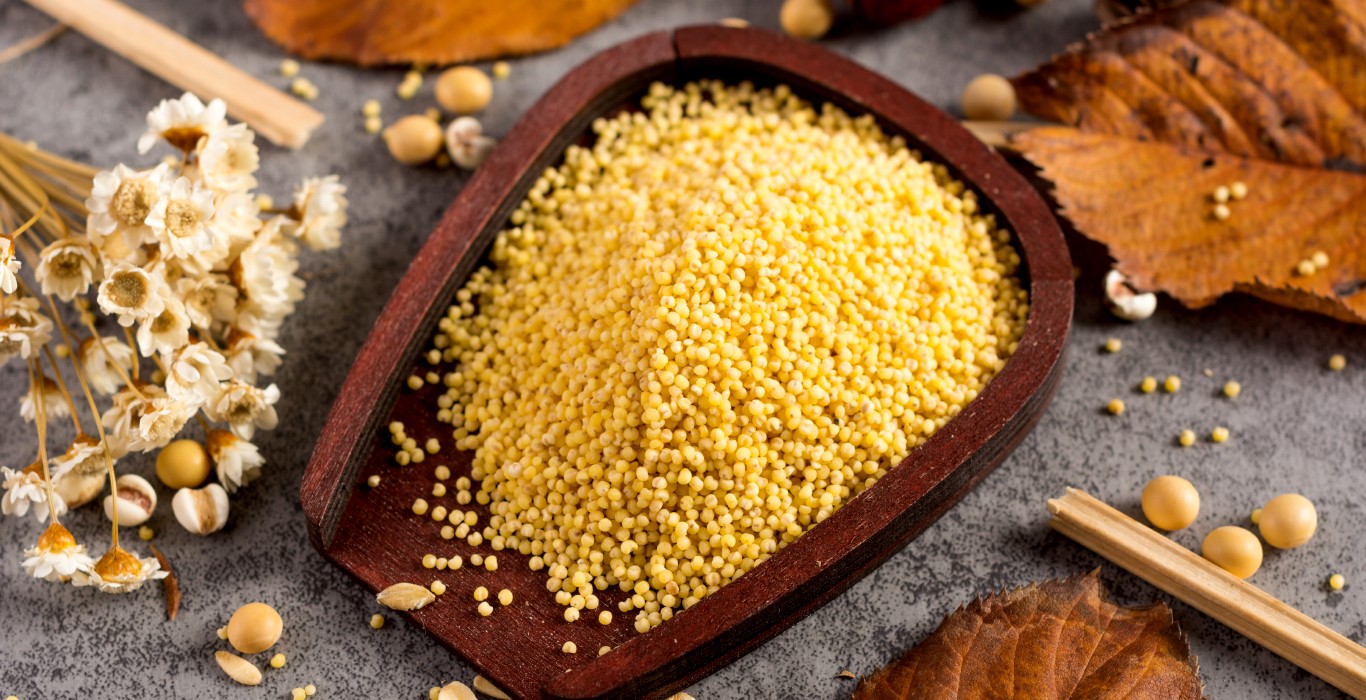Kangni millet or foxtail millet is one of the ancient varieties of millet. It is the most-grown millet species in Asia. They are small seeded, oval or round in shape and yellow in color.
The historical evidence shows the cultivation of foxtail millet since ancient times (8000 years ago). In recent times, millet has made a powerful comeback and people are keen to add different varieties of millet to their routine diet.
Where is Kangni millet grown most? What are other popular names for Foxtail millet? And what are the health benefits of foxtail millet? Let us find answers to these common questions.
Where is Kangni millet grown most?
Kangni millet or foxtail millet is cultivated in different parts of the world. In China, foxtail millet is the main crop and is grown mainly in dry northern parts of the country. In India, it is a staple food in southern India. Foxtail millet is also grown in many parts of Southeast Asia, especially in dry regions. In North America and Europe, foxtail millet is cultivated on a limited scale and is used mainly as bird seed.
Popular names of Foxtail millet
Sataria Itálica is the scientific name of foxtail millet. Here is a list of popular names of foxtail millet in other languages.
- Hindi Kangni
- Marathi Rala or Kang
- Gujrati Kang
- Tamil Tenai
- Kanada Navane
- Telegu Korra
- Assamese Koni Dhan
- Bengali Kaon
- Oriya Kangu
- Malayalam Thina
- German Hirse
- Nepali Kaguno
- Japanese Awa
Health benefits of Kangni or Foxtail millet
Help in the efficient functioning of the nervous system
Foxtail millet is a good source of Vitamin B1. 100 gm of foxtail millet contains 0.59 mg of Vitamin B1. Vitamin B1 plays an important role in nervous system functioning and maintains good brain health and memory functions. Moreover, foxtail millet also helps in slowing down the progression of various neurological disorders like Alzheimer’s disease and Parkinson’s disease.
Good for cardiac health
A recent scientific study shows that the bran of foxtail millet contains a protein which can be good for heart health and can reduce the risk of developing cardiovascular disease.
Maintain good muscle and bone health
Foxtail millet contains a good amount of calcium and iron and helps maintain good bone and muscle health. 100 gm of foxtail millet contains 31.0mg of calcium and 2.8 mg of Iron. Iron plays an important role in maintaining proper muscle function and facilitates faster muscle recovery, too. Calcium maintains good bone health and reduces the risk of fractures and other bone diseases like osteoporosis.
Reduce bad cholesterol level
Foxtail millet is a good source of lecithin and methionine. Both help in reducing bad cholesterol levels in the body. And help in maintaining good functioning of the liver, spleen and gallbladder.
Help in losing weight
Foxtail millet is high in fiber and low in calories. It keeps you fuller for longer and helps to prevent excessive calorie intake. Foxtail millet also contains Tryptophan, which plays an important role in reducing belly fat.
Great cereal option for diabetics
Foxtail millet has a low GI (50.8). It absorbs slowly and prevents sugar spikes. Diabetic patients can replace rice with foxtail recipes and can manage their blood sugar levels very well.
Provide wholesome nutrition (help in preventing and treating nutritional deficiency)
Foxtail millet contains various essential nutrients like iron, calcium, amino acids etc. Including foxtail millet in your diet is a great way to enhance the nutritional quotient of your meal. Foxtail millet can be a great help in preventing and treating various nutritional deficiencies.
Great for people who have gluten allergies
Foxtail millet is a gluten-free grain. Like all other millets, it is a great grain option for those who suffer from gluten allergies.
Good for digestion
Foxtail millet is a good source of fiber. High fiber diet helps in dealing with various gastric issues like constipation and poor digestion. Foxtail millet cleanses the GI tract and improves gastric as well as overall health.
Boost immunity
Foxtail is highly nutritious. It helps in boosting immunity and prevents routine infections.
Takeaway
The year 2023 has been declared an “International year of millets” by the United Nations. Indian government is taking various steps to raise millet awareness and make this initiative a grand success. Indeed, it is an ideal time to include foxtail millet in our diet. This is the simple yet most effective way to improve our health and support the “IYM- International year of millets” initiative from our side.







